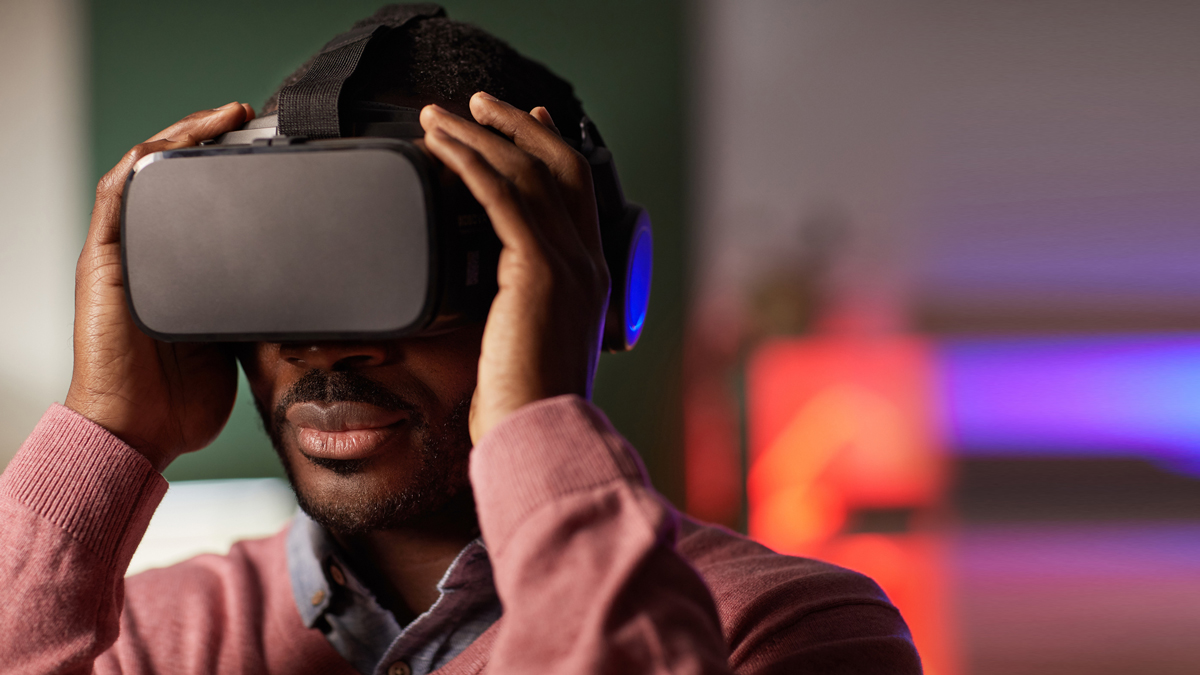Re-envisioning mental health treatment using clinical VR

Skip Rizzo, PhD, research director for medical virtual reality at the University of Southern California's Institute for Creative Technologies (USC ICT), tells us how its virtual reality (VR) therapy BRAVEMIND is changing PTSD treatment and how pharma can leverage clinical VR.
"There's a strong evidence base for VR applications in many areas, but it's also breaking down barriers to care. The value lies in drawing people into treatment, therapy, or wellness and getting them to do things they wouldn't do in a traditional talk therapy setting," Skip says.
The World Health Organization estimates 600 million people worldwide have mental health conditions, but only one-third will see the inside of a therapy office.
Implementing clinical VR can improve access and availability of treatment and destigmatise mental illness, but more research still needs to be done.
BRAVEMIND
Clinical research in VR as a treatment for PTSD was accelerated in 2004 when an epidemiological study of PTSD was published, noting the rise in cases among veterans of the conflicts in Iraq and Afghanistan. Skip says this paper was a "call to arms" to find improved treatment methods.
The year prior, USC ICT partnered with a game development company to build Full Spectrum Warrior, a serious game for the US Army to train service members. The Xbox game was a combat tactical simulation that resembled the streets of Iraq.
"I was able to get access to some of the art assets from Full Spectrum Warrior and build out an exposure therapy application for PTSD with a programmer who previously built a virtual Vietnam scenario," Skip states.
BRAVEMIND, a clinical VR experience designed to deliver the evidence-based practice of exposure therapy was then developed to prevent, assess, and treat PTSD. Initially, four worlds were available, one of which was a generic middle eastern city.
In VR exposure therapy, the theoretical model remained unchanged from traditional talk therapy approaches, with the goal to help patients confront and reprocess difficult emotional memory, but in the safety of a well-trained clinician’s office.
"Clinicians can control the stimulus presentation in VR allowing for the progression of more provocative experiences designed to pace exposure with the end goal of promoting extinction learning and subsequent fear/anxiety reduction," says Skip.
In late 2006, BRAVEMIND was tested in San Diego, California, at the Naval Medical Center and Camp Pendleton, and good clinical data was obtained in the initial open clinical trials. Other groups started to adopt the platform, which led to more research as to its clinical efficacy.
In 2012, the team obtained funding to update BRAVEMIND with more current software and build out the system based on what ICT learned from clinician reports.
Clinicians requested additional environments, such as an Afghan village or a forward operating base in the mountains with incoming mortars based on their patients' experiences.
The next version of BRAVEMIND expanded to 14 different worlds, and in 2019 the nonprofit organisation, Soldier Strong, requested to support the free distribution of BRAVEMIND to any VA facility that wanted to implement this therapy.
In all, BRAVEMIND has been distributed to 120 places.
VR clinical trials
As the distribution of BRAVEMIND increases, so does the amount of data USC ICT collect to improve its experience, and clinical trials provide even more insight.
In a recent trial, researchers compared exposure therapy using VR to traditional exposure therapy with combat vets. Although the results did not substantially differ, Skip says some findings were surprising.
“We have good therapists, and both groups showed good clinical outcomes. It was essentially equivalent except for a pre-planned prediction.”
“We anticipated people with comorbid depression would do better in VR. It’s hard to activate them to engage in their trauma memory with traditional methods, and that was, in fact, the case,” Skip states.
“We also informed participants on the front end that we’d randomly assign them to either VR treatment or traditional therapy, and we asked, ‘if you had your choice of treatment types, which would you prefer?’ Across three study sites, 77% of participants picked VR.”
Even participants who chose VR but were assigned the traditional treatment method did well. Therefore, their preference didn’t predict the outcome.
However, it does make a case for breaking down barriers and providing VR as a digital option as more participants wanted to use that format.
There is still a great deal of research to be done in clinical VR, but evaluating how medications work in conjunction with VR exposure therapy may be a significant next step.
“That’s where the next generation of research has to be,” Skip states. “Does medication impact VR therapy outcomes? And does it matter how long somebody has been on medication?”
How pharma can leverage VR
Pharma can also utilise VR technology to aid in their research, such as testing new medications for children with ADHD.
Skip created a virtual classroom to test children with ADHD and is now working with a company that collects data with this application to support the path to FDA approval.
"Controlled stimulus environments are an ideal way to test the impact of a medication," Skip says.
"Kids can be in the virtual classroom setting, and we can gather data points not just on cognitive performance, but also head and body movements to assess their hyperactivity."
"We can also include a virtual human acting confrontational and see how anxiety or anger levels increase.”
A virtual human is a character that talks to users and engages with them. It can remind one to take their medicine or perform cognitive behavioural exercises.
"Virtual humans could be a way to engage people regularly that could complement the pharmaceutical approach to extending care."
Open research questions exist with clinical VR, but treatment for various conditions is already being explored, such as PTSD among COVID-19 frontline healthcare workers and police officers and measuring improvements in one's range of motion in a rehab context.
"It would be a positive branding move for pharmaceutical companies to partner with VR entities because the public is favourable towards the idea of taking medications in combination therapy with psychological intervention," Skip states.
About the interviewee
Albert “Skip” Rizzo is a clinical psychologist and director of medical virtual reality at the University of Southern California Institute for Creative Technologies. He is also a research professor with the USC Dept. of Psychiatry and at the USC Davis School of Gerontology. Over the last 25 years, Skip has conducted research on the design, development and evaluation of virtual reality systems targeting the areas of clinical assessment and intervention across the domains of psychological, cognitive and motor functioning in both healthy and clinical populations. This work has focused on PTSD, TBI, Autism, ADHD, Alzheimer’s disease, stroke and other clinical conditions. Despite the diversity of these clinical R&D areas, the common thread that drives all his work with digital technologies involves the study of how interactive and immersive Virtual Reality simulations can be usefully applied to address human healthcare needs beyond what is possible with traditional 20th Century tools and methods. To view some videos of this work, please visit this YouTube channel.
About the author
 Jessica Hagen is a freelance life sciences and health writer and project manager who has worked with VR health companies, fiction/nonfiction authors, nonprofit and for-profit organisations, and government entities.
Jessica Hagen is a freelance life sciences and health writer and project manager who has worked with VR health companies, fiction/nonfiction authors, nonprofit and for-profit organisations, and government entities.












